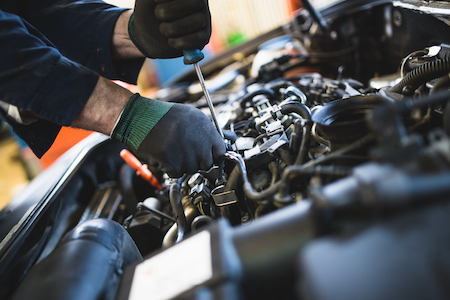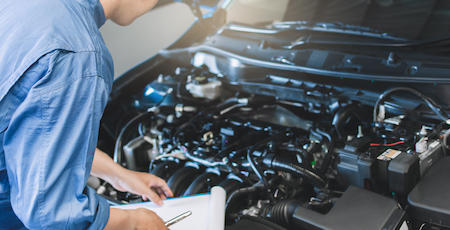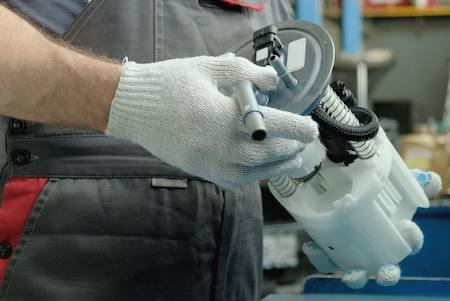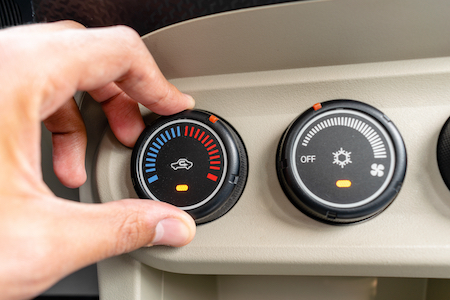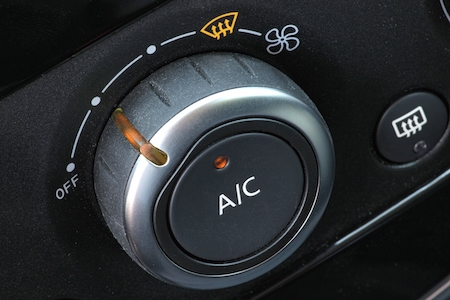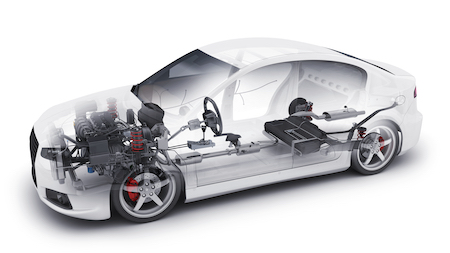You can order anything online anymore. But is it a good idea? How often have you received something in the mail that doesn’t meet your expectations?
If it’s a low quality shirt, you may only get a few wears before it falls apart. Other than looking bad, it doesn’t impact your health.
Not so with auto parts. If you install faulty brake pads, or motor oil that’s compromised, it can cause your car to fail. And if you’re sailing down the highway, that can be dangerous at best.
Mechanics may be a dime a dozen. You can find them on almost any street corner. But what sets a trustworthy mechanic apart from a crooked mechanic? How can you ensure the auto parts installed are safe, and the work is top-notch?
Building a professional relationship with a good mechanic can provide peace of mind every time you drive. You’ll know that when you visit, the work will be done efficiently, auto repair parts will be in good working condition, and you’ll drive away with a car you can trust.
But how do you know you’ve found a good mechanic? What should you look for to ensure they are trustworthy?
The key is starting early before you need a significant repair. Start small to test out the service. You can ask your friends or coworkers for referrals. Or check online with BBB or other review sites that can lead you to good services. Be aware that good reviews can be bought with a good PR and social media team, so it’s wise to do your due diligence in many ways before you select a mechanic.
We have a few other ways to help you find trustworthy garages in your community.
Easy to connect with
A reputable mechanic will always make it easy to do business with them. They will create a website with phone numbers and addresses prominently displayed. They will have someone answering the phones during normal business hours. They will return your calls promptly. Because they want to form a relationship with their customers, they will connect with you throughout the repair process to ensure you understand your options, helping you make the right decision to suit your needs.
Ask for estimates and options
The most trustworthy garages will keep you informed every step of the way. They’ll start by inspecting the car based on your comments and input, and then pinpoint where the problem is. They’ll contact you to explain the situation, and give you options for fixing it. They’ll give you their assessment and input, but will allow you to finalize the decision. Their job is to provide a vehicle back to you that’s fixed and drivable, or to alert you to where the potential problems still lie.
Trust your instincts
A first impression is everything. For a garage, you can tell just by walking in how reputable they will be. Does someone greet you when you come in? Do they ask questions and listen to your answers? Are they more concerned with prices than they are with ensuring your satisfaction? This is another reason it’s a good idea to start with small tasks and build trust. It’s much easier dealing with a less-than-reputable service station for an oil change than dealing with the aftereffects of a much bigger problem.
Scams come in all shapes and sizes. If a garage only desires cash, it will show up in the way they treat you as a customer. Reputable companies understand that while you may only need an inexpensive service today, if they build a relationship with you, you’ll bring your car back repeatedly. They work to help you create a safe, drivable vehicle, and will be there to help keep it that way for years to come.
Service agreement
Every garage will produce a service agreement before they begin work on your vehicle. This may give you an estimate of work needed to be done. In some cases, this may be verbal and over the phone. If they had to perform diagnostics to get to the root cause, they may be able to describe damages and work to be done over the phone. You can still get a copy of this agreement to keep on file. They should be willing to put their work in writing, and answer any of your questions after reading the contract.
You’ll most likely be required to pay for your car in full when you pick it up. Most reputable mechanics will take several payment methods, including credit cards. If you have questions about payment, ask at the time you drop your car off, not when you’re trying to pick it up. This will give you more of an opportunity to be ready when service is complete.
Safe auto parts
A reputable mechanic will have connections to get the most trustworthy auto parts available to fix your car. It may seem like something you don’t have to think twice about, but cheap, unreliable auto parts are a major scam. Cheap aftermarket parts are produced in many ways, often showing up at the installation end of some mechanics. If a garage cares about price only, they may use the cheapest parts they can find. That puts you in danger of having repeat repair bills in shorter periods of time.
If you have a relationship with a trustworthy mechanic, you’ll understand where they get their parts, and be able to rely on their work to keep you safe as you drive away. Yes, potential problems happen frequently. But if you start with high-quality parts from trusted resources, your chances drop of short-term problems.
You should also be able to see the old parts, and have the mechanic show you where the problem is. This can alert you to a mechanic who either didn’t change the parts they promised, or didn’t do the work as requested.
Find a trustworthy mechanic who treats you with integrity
It should go without saying, but whenever you form a relationship with a service you intend to use for years, you should feel that they treat you well, and approach each interaction with integrity.
Of course, people can have bad days. But it shows up in the way they handle any situation. If they make a mistake, they’re willing to fix it. They never use scare tactics to get you to say: Yes. And you know you can get a straightforward answer just by asking.
Have you found a trustworthy mechanic you can rely on?

